Unlocking New Heights in Roof Inspections: Drones have revolutionized various industries, and one area where their impact has been significant is in roof inspections. By providing aerial perspectives, drones offer numerous advantages over traditional inspection methods. In this article, we will explore the power of drones in roof inspections and how they can provide valuable insights for homeowners, contractors, and insurance companies alike.
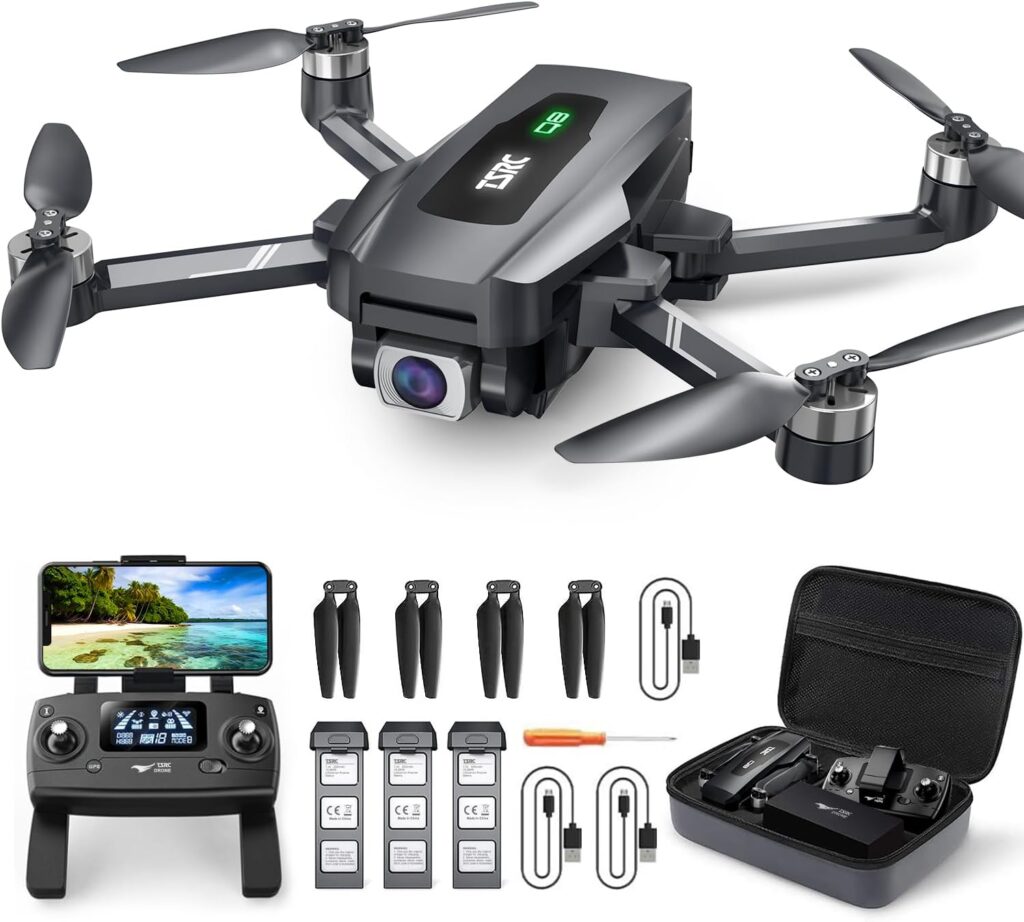
Benefits of Using Drones for Roof Inspections
The use of drones in roof inspections has revolutionized the way roofing professionals conduct their work. These unmanned aerial vehicles have proven to be an invaluable tool, offering numerous benefits that traditional inspection methods cannot match. In this article, we will explore some of these advantages and demonstrate how the power of drones can enhance roof inspections.
Firstly, one of the most significant benefits of using drones for roof inspections is safety. Roofing work can be dangerous, with workers having to climb ladders or walk on precarious surfaces to inspect roofs manually. With drones, however, this risk is mitigated as they are able to access hard-to-reach areas without jeopardizing human lives. Drones can fly at various heights and angles, capturing high-resolution images and videos from different perspectives. This allows inspectors to thoroughly examine every part of a roof without putting themselves in harm’s way.
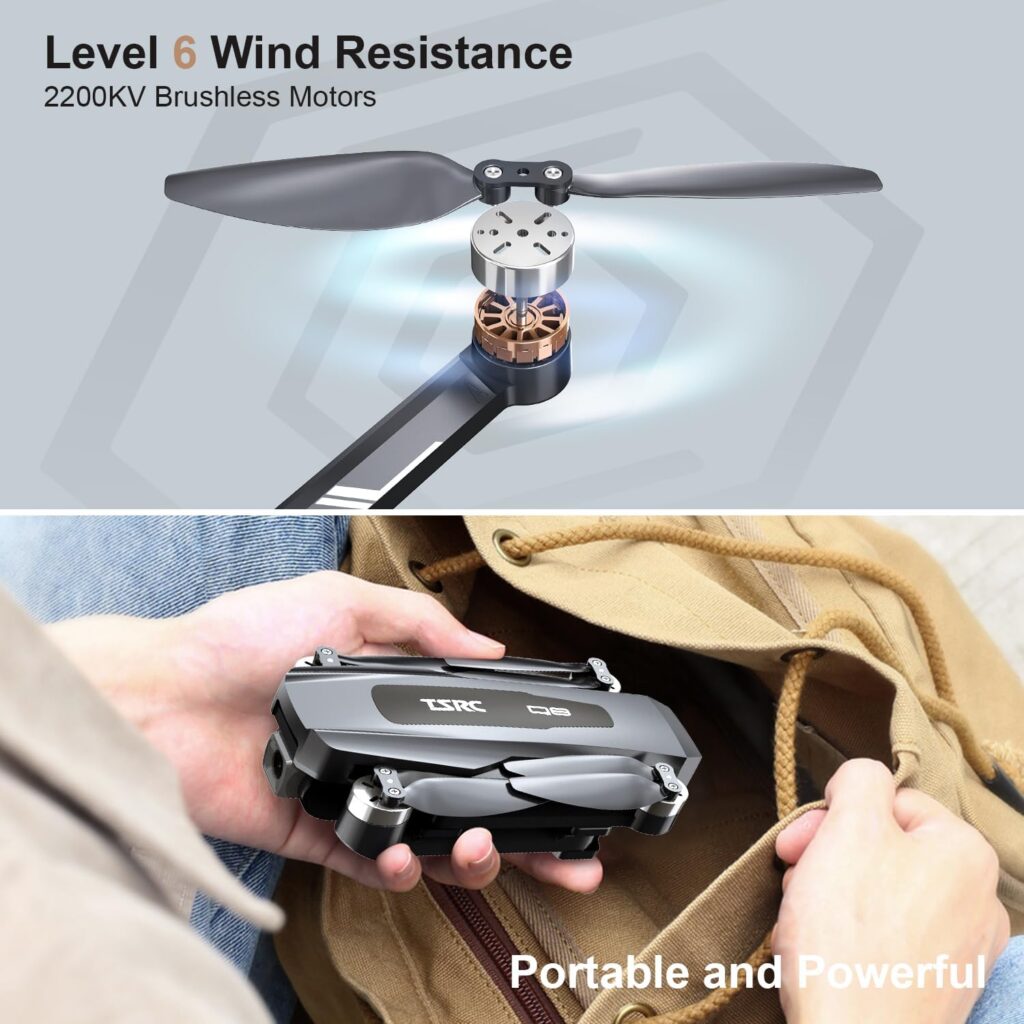
Another advantage of drone-assisted inspections is efficiency. Traditional methods often require manual labor and extensive time investments. Inspectors may need hours or even days to complete a comprehensive evaluation manually. However, drones equipped with advanced cameras and sensors can quickly capture detailed images and videos within minutes or hours – depending on the size and complexity of the roof – significantly reducing inspection times.
Furthermore, drone technology enhances accuracy in roof inspections due to its ability to provide precise measurements and data analysis capabilities. Drones equipped with thermal imaging cameras can detect moisture infiltration or insulation issues that may not be visible through regular visual inspection alone. By providing accurate measurements for square footage estimations or identifying weak spots in a building’s structure, inspectors armed with drone-captured data can make informed decisions about necessary repairs or maintenance strategies.
Additionally, using drones eliminates any potential bias introduced by human error during conventional rooftop evaluations since they rely solely on objective data captured through their sensors rather than subjective judgments based on individual experiences or preconceived notions about a particular building’s condition.
Moreover, cost-effectiveness is another compelling reason to utilize drones in roof inspections. Although the initial investment in purchasing or hiring a drone may seem significant, it is outweighed by the long-term financial benefits gained from reduced labor costs and increased efficiency. Drones eliminate the need for expensive equipment such as scaffolding, harnesses, or specialized safety gear often required during manual inspections. Additionally, drones can cover more ground within a shorter timeframe than human inspectors would be able to achieve manually.
Lastly, another noteworthy advantage of drone-based inspections is their environmental friendliness. Traditional inspection methods involving extensive traveling or physical presence on-site contribute to carbon emissions and ecological footprints. By using drones instead, these negative impacts are significantly minimized since they require minimal transportation and produce zero emissions during operation.
In conclusion, the power of drones in roof inspections cannot be understated. These aerial devices offer numerous benefits that enhance safety levels for workers while increasing efficiency, accuracy, cost-effectiveness, and environmental sustainability compared to traditional inspection methods. With ongoing advancements in technology and greater accessibility to this innovative tool, it is clear that drones will continue playing a vital role in revolutionizing roof inspections for years to come
Enhancing Efficiency and Accuracy with Drone Technology
The use of drones in various industries has been steadily increasing over the past few years. One particular area where drones have proven to be incredibly beneficial is in roof inspections. The traditional method of inspecting roofs involved manual labor and sometimes even putting workers at risk. However, with the introduction of drone technology, roof inspections have become much more efficient and accurate.
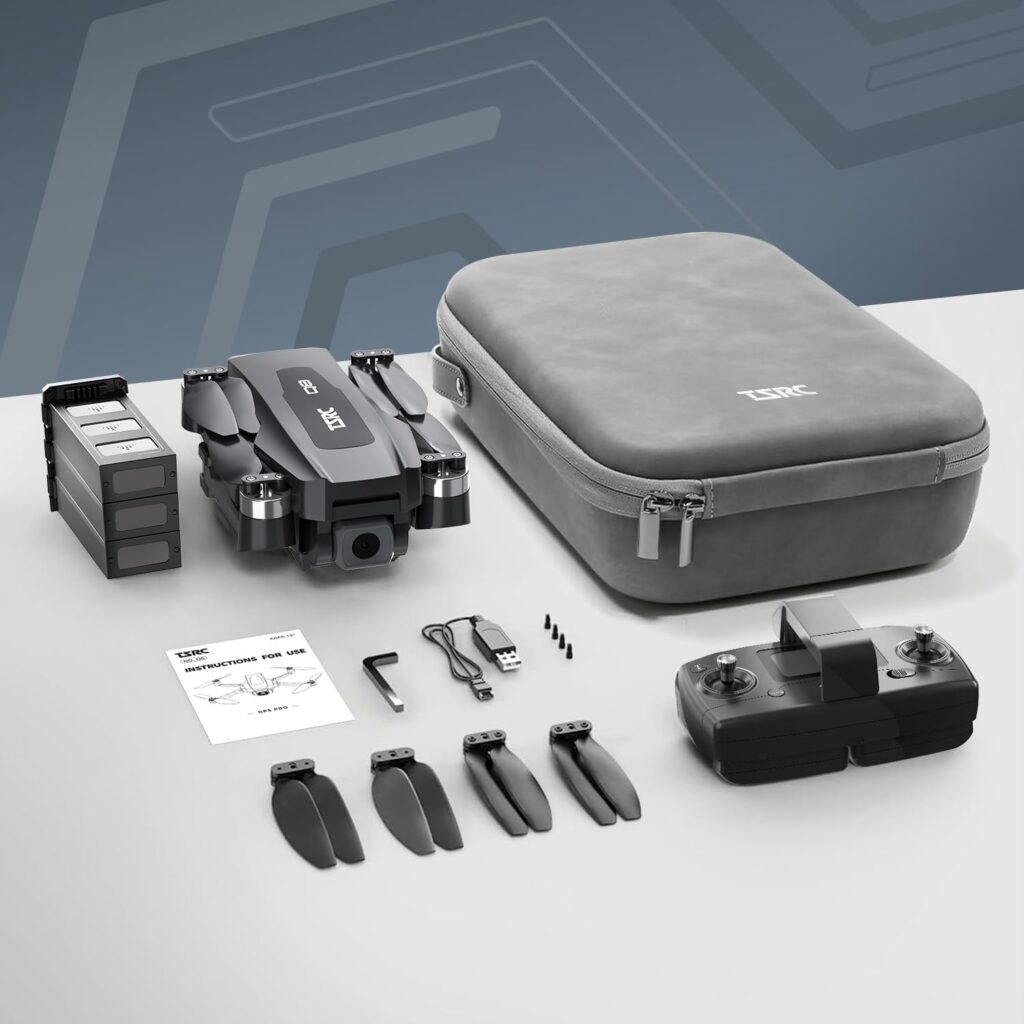
One of the key advantages of using drones for roof inspections is the ability to access hard-to-reach areas. Drones can easily fly over rooftops and capture detailed images or videos without any physical limitations. This eliminates the need for workers to climb ladders or scaffolding, which not only saves time but also minimizes potential accidents or injuries.
Furthermore, drones equipped with high-resolution cameras are able to provide a level of detail that would be difficult to achieve through traditional inspection methods. These cameras can capture close-up images that reveal cracks, leaks, or other forms of damage that may not be visible from ground level. By capturing such precise data, drone technology enables inspectors to identify issues quickly and accurately assess their severity.
In addition to visual imagery, some advanced drones also come equipped with thermal sensors. These sensors allow inspectors to detect temperature differences on a roof’s surface which may indicate moisture intrusion or insulation problems. By identifying these issues early on, property owners can prevent further damage and save money on potential repairs down the line.
Another major benefit of utilizing drone technology in roof inspections is improved efficiency. Traditionally, inspecting large commercial buildings or complexes would require significant manpower and take several days or even weeks to complete fully. With drones, however, this process can be significantly expedited as they are capable of covering large areas in a short amount of time.
Moreover, unlike human inspectors who require breaks and rest periods during an extended project duration – thus potentially delaying progress – drones can operate continuously as long as their batteries are charged properly ensuring swift completion times while maintaining accuracy throughout.
Apart from efficiency, the use of drones also offers cost savings. The cost associated with traditional roof inspections can be quite substantial. Hiring workers, providing necessary safety equipment, and dealing with potential liability issues all add up. Drones eliminate these expenses by streamlining the inspection process and reducing labor requirements.
Furthermore, drone technology allows for regular preventive maintenance checks that can help identify minor issues before they escalate into major problems. By catching these problems early on, property owners can save significant amounts of money on repairs or replacements.
In conclusion, drones have revolutionized the field of roof inspections by enhancing efficiency and accuracy. With their ability to access hard-to-reach areas, capture high-resolution images and thermal data, drones provide inspectors with valuable information that was previously inaccessible or time-consuming to obtain. Not only do they expedite the inspection process but also result in significant cost savings for property owners through preventive maintenance practices. As drone technology continues to advance, we can expect even greater improvements in aerial perspectives for various industries beyond just roof inspections
The Role of Drones in Reducing Inspection Costs
In recent years, the use of drones has revolutionized various industries, and one such industry that has greatly benefited from this technology is roof inspections. Traditionally, conducting a roof inspection involved considerable time, effort, and cost. However, with the advent of drones equipped with high-resolution cameras and thermal imaging capabilities, these inspections have become significantly more efficient and cost-effective.
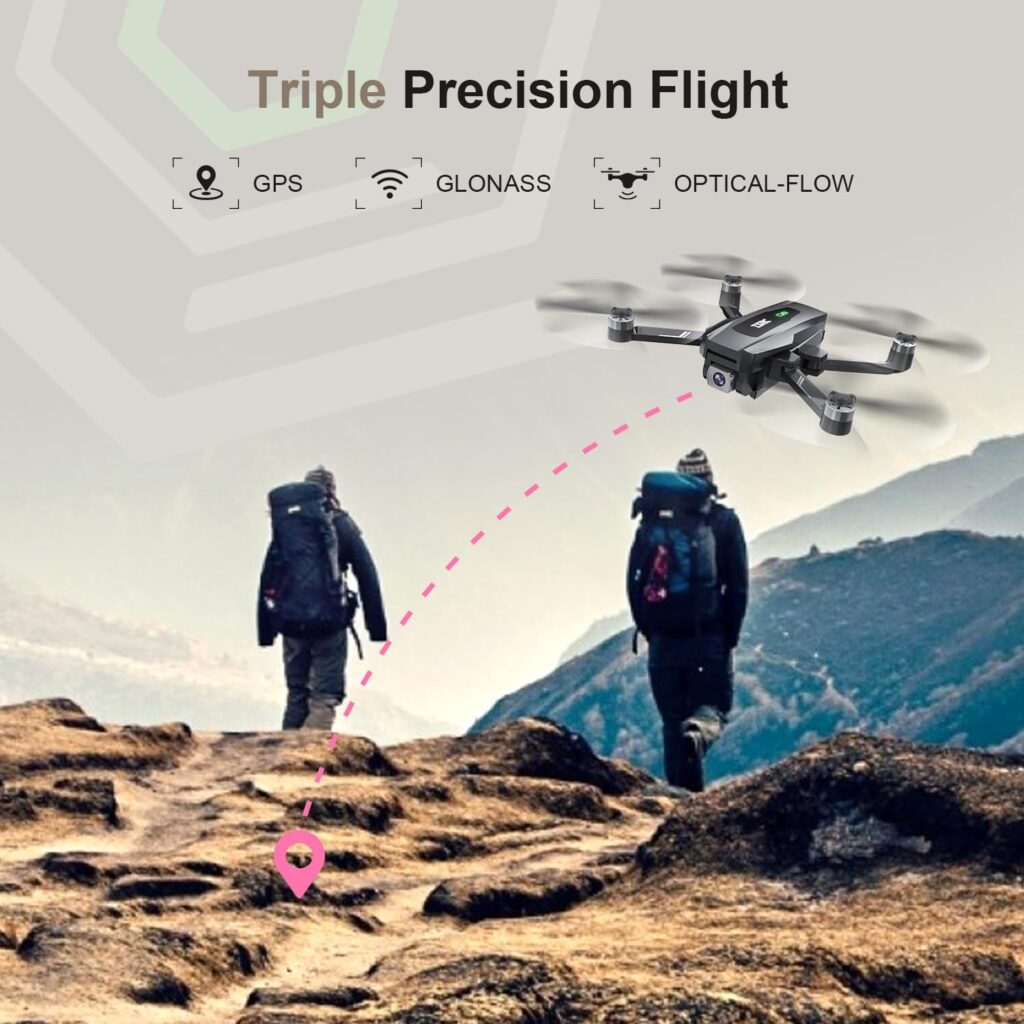
One major advantage of using drones for roof inspections is the ability to access hard-to-reach areas without putting workers at risk. Roofs can be steep or unstable, making it dangerous for inspectors to physically climb up and navigate them. By employing drones instead, inspectors can capture aerial images and videos that provide a comprehensive view of the entire roof structure. This not only ensures their safety but also enables them to identify potential issues that might otherwise go unnoticed.
Furthermore, drone technology allows for quick data collection during inspections. In traditional methods, inspectors would need to manually document their findings on paper or take photographs from different angles before returning to the office to analyze the information gathered. This process was time-consuming and often prone to errors or omissions in documentation. With drones capturing real-time images and videos during flight missions controlled by trained operators on-site, all relevant data can now be recorded instantaneously.
Moreover, utilizing thermal imaging sensors mounted on drones significantly enhances roof inspections’ effectiveness by identifying areas with heat anomalies indicative of insulation problems or leaks undetectable by visual inspection alone. These thermal cameras detect variations in temperature across a surface which could signify energy loss points due to inadequate insulation or water infiltration resulting in wet spots beneath roofing materials. The precision provided by drone-based thermal imagery helps pinpoint problem areas efficiently without having to rely solely on guesswork.
Aside from enhancing efficiency and accuracy in assessments through improved accessibility and real-time data collection capabilities coupled with thermal imaging technology’s added benefits – there is another key advantage: significant cost reduction associated with drone-based inspections. Traditional roof inspections often required the use of scaffolding, lifts, or even helicopters in more extreme cases to get a complete view of the entire structure. These additional resources not only drove up inspection costs but also extended the duration needed to carry out thorough examinations. By employing drones instead, these extra expenses can be significantly minimized or even eliminated altogether.
By replacing expensive and time-consuming methods with drones equipped with state-of-the-art technology, companies can greatly reduce their overhead costs for conducting roof inspections. Drones eliminate the need for renting equipment like scaffolding or aerial platforms while reducing labor hours necessary for physical examination by enabling remote monitoring through high-resolution images and videos captured during flights.
In conclusion, drones have emerged as a game-changer in roof inspections by revolutionizing traditional practices that were not only labor-intensive but also costly. With improved accessibility to hard-to-reach areas and real-time data collection capabilities coupled with thermal imaging technology’s added advantages, inspectors can now identify potential issues accurately and efficiently without risking their safety or spending excessive amounts of money on additional resources. As this technology continues to advance and become more widely adopted, it is evident that drones will play an increasingly pivotal role in reducing inspection costs across various industries – including roofing – while simultaneously improving overall efficiency and effectiveness in assessments.
How Drones Improve Safety in Roof Inspections
Roof inspections are a crucial aspect of property maintenance, as they help identify any potential issues or damages that may compromise the structural integrity of a building. Traditionally, roof inspections have been performed by human inspectors who climb onto rooftops, which can be a time-consuming and dangerous task. However, with advancements in technology, drones have emerged as powerful tools that improve safety in roof inspections.
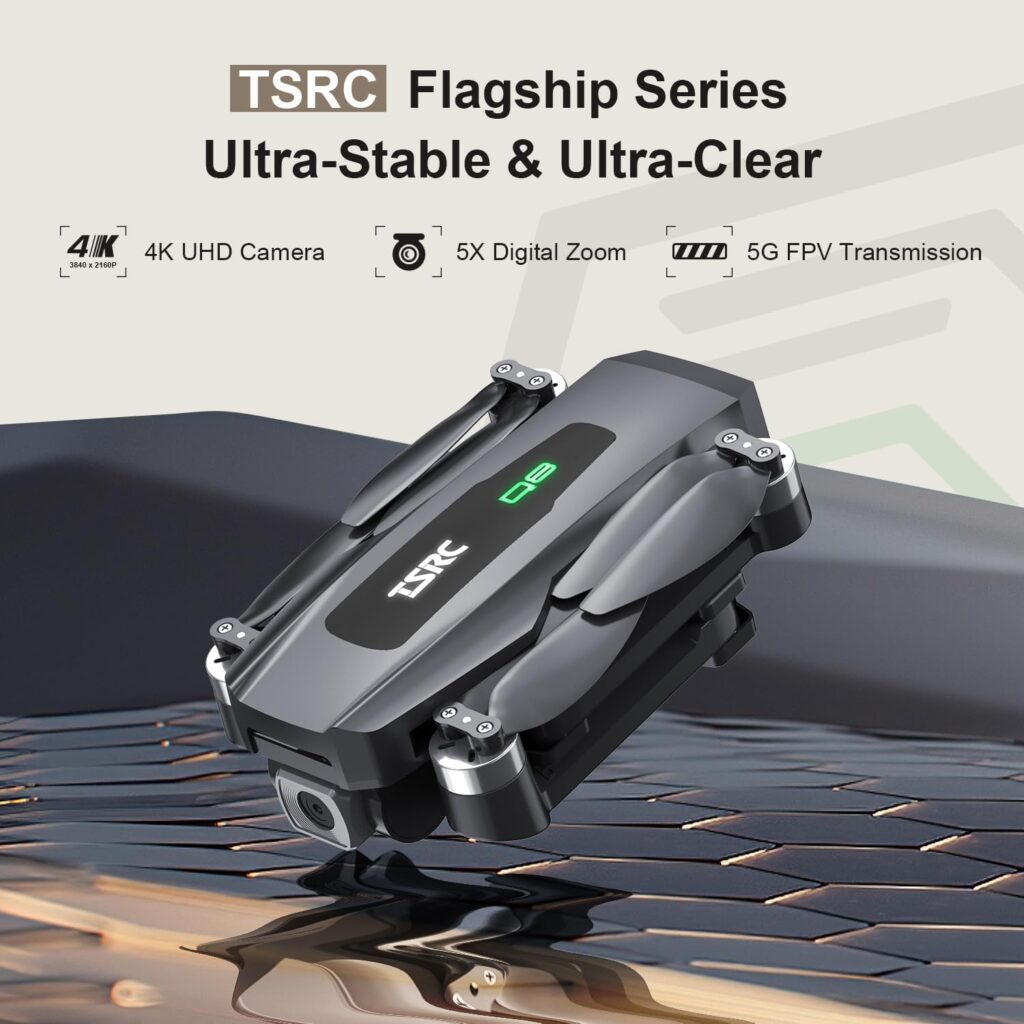
One of the primary advantages of using drones for roof inspections is the enhanced safety they provide. By utilizing aerial perspectives, drones eliminate the need for human inspectors to physically climb onto rooftops. This eliminates the risks associated with working at heights, such as falls and injuries. Instead, operators can safely control the drone from ground level while capturing high-resolution images and videos of roofs.
In addition to preventing accidents, drones also offer increased efficiency during roof inspections. Traditional methods often involve manual inspection where an inspector walks around on a rooftop searching for defects or problem areas. This process can be time-consuming and tedious; however, drones equipped with high-resolution cameras can quickly capture detailed images and videos covering every inch of a roof in minutes.
Moreover, these images and videos obtained by drones provide an accurate visual record that allows inspectors to assess roofs more effectively. The data collected offers precise details about the condition of roofing materials such as cracks, leaks or missing shingles—information that may not be easily visible from ground-level observations alone.
Furthermore, since most drones are equipped with advanced imaging technologies like thermal cameras or infrared sensors—inspectors gain an advantage over traditional methods when it comes to identifying hidden defects within roofing structures. For instance, thermal cameras can detect temperature variations on roofs indicating potential insulation problems or leaks that could lead to energy inefficiency or water damage if left undetected.
Another notable benefit provided by drone technology is its ability to access hard-to-reach areas without difficulty—a challenge commonly faced during conventional inspection procedures involving tall buildings or steep slopes where climbing becomes even more dangerous. Drones can navigate effortlessly around obstacles and reach areas that are inaccessible or hazardous for humans, ensuring a comprehensive examination of the entire roof.
Despite these advantages, it is important to note that drone inspections do not completely replace human expertise; they rather serve as a tool to complement and enhance traditional inspection methods. While drones capture high-quality visual data efficiently, human inspectors are still necessary to interpret this information accurately and make informed decisions regarding any required repairs or maintenance.
In conclusion, drones have proven to be powerful tools in improving safety during roof inspections by eliminating the need for human inspectors to physically access rooftops. By providing enhanced aerial perspectives, drones offer increased efficiency through quicker data collection and analysis. Additionally, their advanced imaging technologies aid in identifying hidden defects within roofs while allowing easy access to hard-to-reach areas without risking human lives. However, it is crucial to remember that although drones provide valuable insights into roof conditions, human expertise remains essential for proper interpretation of the collected data. With ongoing advancements in technology and regulations surrounding drone usage evolving positively over time, it is expected that their role will continue to expand in the field of roof inspections—an innovation driving progress towards safer and more efficient property maintenance practices.
Exploring the Potential of Drone Photography in Roof Assessments
Roof inspections are a crucial aspect of maintaining the structural integrity and safety of buildings. Traditionally, these assessments have been conducted manually, with inspectors climbing ladders and accessing rooftops to visually inspect for any damages or vulnerabilities. However, advancements in technology have introduced an innovative approach to roof inspections – the use of drones.
Drone photography is rapidly gaining popularity due to its ability to provide aerial perspectives that were previously unattainable. With their small size, maneuverability, and high-resolution cameras, drones can capture detailed images from various angles and heights. This enables inspectors to thoroughly assess roofs without the need for physical presence on the rooftop.
One significant advantage of using drones for roof inspections is increased safety. By eliminating the need for manual inspection methods involving ladders or scaffolding, inspectors are protected from potential accidents or falls. This not only reduces the risk of injuries but also minimizes liability concerns for building owners.

Moreover, drone inspections offer unparalleled access to hard-to-reach areas such as steep or complex roof designs. These areas often pose challenges during traditional inspections as they require specialized equipment and skilled personnel to navigate safely. Drones effortlessly maneuver through tight spaces and capture high-definition images without compromising accuracy or efficiency.
The speed at which drone inspections can be conducted is another remarkable benefit worth considering. Traditional roof assessments typically involve hours if not days spent on-site assessing every inch manually. In contrast, drones equipped with advanced imaging technology allow rapid data collection by covering large surface areas within minutes.
To ensure accurate assessments, it is essential that drone operators receive adequate training in capturing high-quality images during flights while adhering to local regulations regarding flight restrictions and permissions granted by authorities.
Beyond providing visual imagery alone, technological advancements enable additional capabilities such as thermal imaging for detecting moisture intrusion or insulation deficiencies on roofs – something not possible through traditional means alone.
Despite these numerous advantages offered by drone inspections, it is important to note that they are not intended to entirely replace traditional roof assessments. Rather, drones serve as a valuable tool to supplement and enhance the existing inspection process.
One challenge associated with drone inspections is data management. The high-resolution images captured by drones result in large data files that require proper organization and storage. Establishing efficient workflows for processing and analyzing this wealth of information is crucial to deriving actionable insights from the aerial imagery collected during inspections.
Furthermore, while drones can identify visible damages or potential vulnerabilities on roofs, their ability to provide detailed structural analysis remains limited. Structural engineers play an integral role in determining the severity of any identified issues and recommending appropriate repairs or replacements.
In conclusion, the power of drones in roof inspections lies in their ability to provide aerial perspectives that were previously inaccessible. With improved safety measures, increased accessibility to hard-to-reach areas, rapid data collection capabilities, and advanced imaging technologies such as thermal imaging, drones have revolutionized the field of roof assessments. However, it is vital to recognize that human expertise remains essential for interpreting findings and making informed decisions based on these assessments. As technology continues to advance alongside regulatory frameworks governing drone operations further establishing guidelines for best practices will continue optimizing this innovative approach within roofing industry ensuring its full potential is realized ultimately benefiting building owners by facilitating timely maintenance interventions reducing long-term costs through preventing severe damages incurred due neglected repair needs detected too late along with protecting workers’ health while executing critical assessment tasks related with operating at heights needed throughout maintaining safe functional roofing systems above our heads
Case Studies: Successful Implementation of Drones in Roof Inspections
Roof inspections are a critical aspect of building maintenance and safety. Traditionally, these inspections have been conducted manually by human inspectors, often involving climbing ladders or utilizing elevated platforms. However, recent advancements in technology have revolutionized the way roof inspections are carried out. Unmanned aerial vehicles, commonly known as drones, have emerged as powerful tools in this field due to their ability to provide comprehensive and efficient aerial perspectives.

The successful implementation of drones in roof inspections can be seen through various case studies across different industries. One such case study is from the construction industry, where drones were utilized for inspecting roofs during the construction phase. By deploying drones equipped with high-resolution cameras, contractors were able to monitor the progress and quality of roofing installations more effectively than traditional methods.
In another case study from the insurance sector, a large insurance company implemented drone-based roof inspections as part of its claims assessment process. This innovative approach not only expedited the claim settlement process but also enhanced accuracy and reduced costs significantly. Drones allowed insurance adjusters to remotely capture detailed images and videos of damaged roofs without physically accessing them. As a result, claim assessments could be conducted promptly without endangering personnel or requiring additional resources.
Drones have also proved beneficial in conducting routine maintenance inspections for commercial buildings with expansive roofs that are challenging to access manually. For instance, a major retail chain employed drones for regular roof surveys across its numerous stores spread across vast geographical areas. These surveys helped identify potential issues before they escalated into costly repairs or jeopardized customer safety.
Furthermore, environmental factors play a crucial role in maintaining optimal conditions within industrial facilities such as factories and warehouses. Drones equipped with specialized sensors can efficiently assess roof conditions by capturing thermal imaging data or identifying leakages using infrared technology. These advanced capabilities allow facility managers to address maintenance issues promptly while minimizing downtime and optimizing energy efficiency.
Another noteworthy example comes from the real estate industry where property developers utilize drone technology to evaluate the condition of roofs in potential acquisitions. Drones equipped with high-resolution cameras and sensors capture detailed images, enabling developers to assess the structural integrity of roofs without physically inspecting each property. This not only saves time but also aids in making informed investment decisions.
The implementation of drones in roof inspections has undoubtedly provided significant advantages compared to conventional methods. In addition to their ability to capture comprehensive aerial perspectives, drones offer enhanced safety for inspectors by eliminating the need for risky manual interventions. They also save time and resources through efficient data collection and analysis.
Despite these benefits, it is important to note that drone-based roof inspections do have limitations. Factors such as adverse weather conditions or airspace regulations can hinder their deployment, potentially impacting inspection schedules. Moreover, operating drones requires skilled personnel who are well-versed in both flying techniques and data interpretation.
In conclusion, the successful implementation of drones in roof inspections across various industries highlights their immense power as a tool for providing aerial perspectives. Case studies from construction companies, insurance providers, retail chains, industrial facilities management firms, and real estate developers showcase the transformative impact that drones have had on this field. While they offer numerous advantages over traditional inspection methods by increasing efficiency and reducing costs while ensuring safety remains a top priority – there are still challenges that need to be addressed before widespread adoption becomes a reality.
Overcoming Challenges: Integrating Drones into Existing Inspection Processes
Drones have revolutionized various industries, and one area where they have demonstrated significant potential is in roof inspections. The use of drones in this context allows for aerial perspectives that can capture detailed images and videos, offering a comprehensive view of roofs without the need for physical presence or climbing hazardous structures. However, integrating drones into existing inspection processes is not without its challenges.
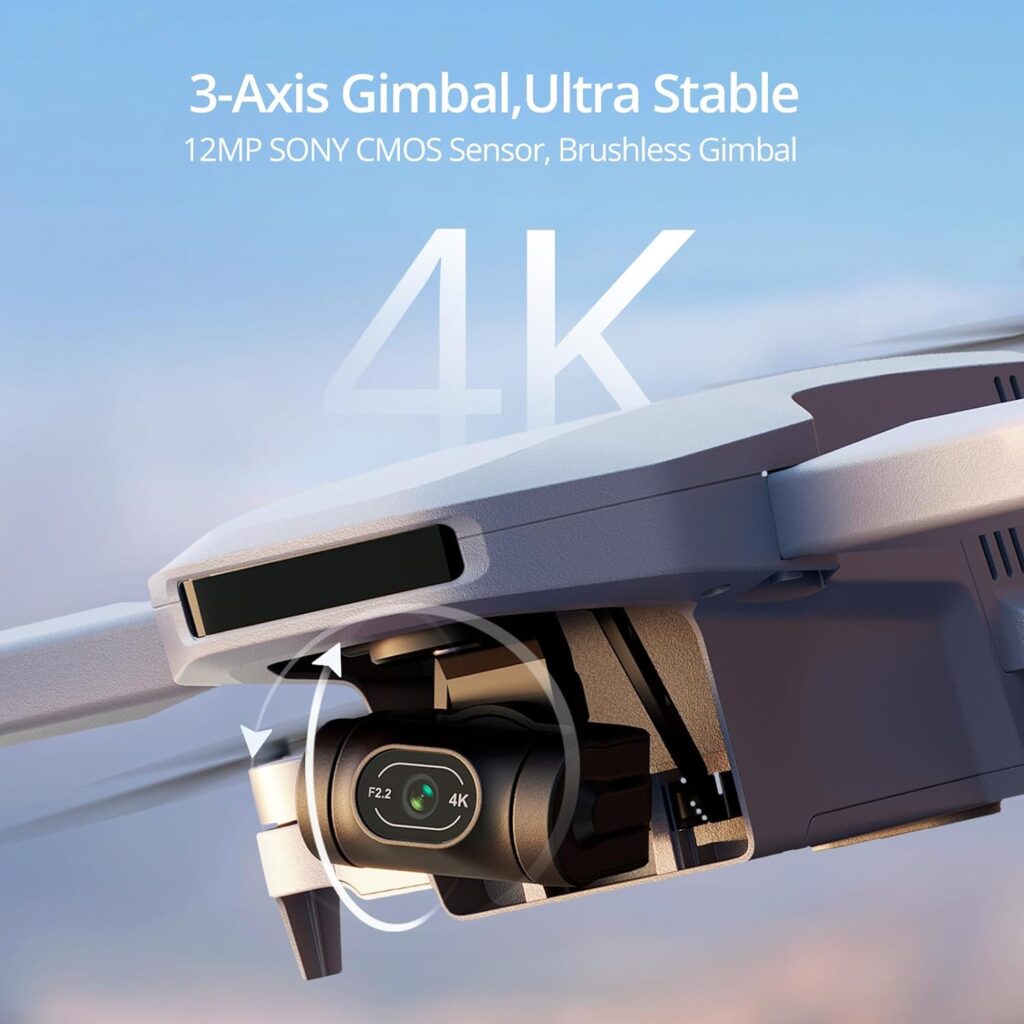
One key challenge to overcome when incorporating drones into roof inspections is the issue of regulatory compliance. The Federal Aviation Administration (FAA) has established guidelines and regulations governing the operation of unmanned aircraft systems (UAS), including drones. These rules are designed to ensure safety and prevent interference with other airspace users such as manned aircraft.
To address this challenge, organizations must obtain proper certifications and permissions from the FAA before using drones for commercial purposes such as roof inspections. This typically involves obtaining a remote pilot certificate, which requires passing an aeronautical knowledge test administered by the FAA. Additionally, operators must comply with specific flight restrictions related to altitude limits, airspace authorization requirements, and proximity to airports or heliports.
Another obstacle faced when integrating drones into existing inspection processes relates to data management and analysis. Drones generate vast amounts of data through high-resolution imagery and video footage captured during flights. Effectively managing this data requires robust storage capabilities along with efficient tools for processing and analysis.
Moreover, interpreting drone-generated data can be challenging due to the sheer volume of information collected during each inspection flight. Organizations may need specialized software or trained personnel capable of transforming raw drone imagery into meaningful insights about the condition of roofs being inspected.
Integrating drones into existing inspection workflows also presents logistical challenges that should not be overlooked. Aspects such as equipment maintenance, battery life limitations, weather conditions affecting safe flying operations all need careful consideration in order to avoid disruptions or delays in routine inspections.
Addressing these logistical concerns involves establishing protocols for regular maintenance checks on drone hardware components such as motors, batteries, and sensors. Additionally, backup batteries or charging stations may be necessary to ensure uninterrupted flight operations. Weather monitoring systems can also help mitigate risks associated with adverse weather conditions that may prevent safe drone flights.
Furthermore, training personnel to operate drones safely and efficiently is another challenge faced when integrating them into existing inspection processes. Operating a drone requires a combination of technical skills and knowledge about FAA regulations governing UAS operations. Organizations must invest in proper training programs for their staff members who will be operating the drones during inspections.
These training programs should cover topics such as pre-flight checks, flight planning, emergency procedures, data collection techniques, and post-processing of collected data. By equipping employees with the necessary skills and knowledge, organizations can minimize operational risks associated with improper drone use.
Despite these challenges, the benefits of integrating drones into roof inspections are substantial. Drones enable quick and accurate assessments of roofs by providing high-resolution imagery that can reveal otherwise difficult-to-detect issues such as cracks or leaks. This improved accuracy translates into more efficient repair planning processes while reducing costs associated with manual inspections or scaffolding setups.
In conclusion, incorporating drones into existing roof inspection processes offers significant advantages but comes with its fair share of challenges. Overcoming regulatory compliance requirements related to FAA guidelines is essential before conducting commercial drone flights for inspections purposes. Moreover, effective management of data generated by drones along with addressing logistical concerns like maintenance protocols ensures smooth integration within current workflows. Training personnel on both technical aspects of flying drones as well as understanding relevant regulations completes the process successfully.
Future Trends: Advancements and Innovations in Drone-Assisted Roof Inspections
The use of drones in various industries has grown exponentially in recent years, and the field of roof inspections is no exception. Drones offer a unique perspective that allows for more accurate and efficient assessments of roofs, resulting in improved safety, cost savings, and overall better quality inspections.
One major advantage of using drones for roof inspections is their ability to access hard-to-reach areas. In traditional inspections, technicians often have to climb ladders or scaffolding to examine every part of a roof. This not only puts them at risk for falls and other accidents but also takes up a significant amount of time. With drones, however, technicians can fly the unmanned aerial vehicles over the entire roof without having to physically access it. This saves both time and resources while significantly reducing the potential for accidents.
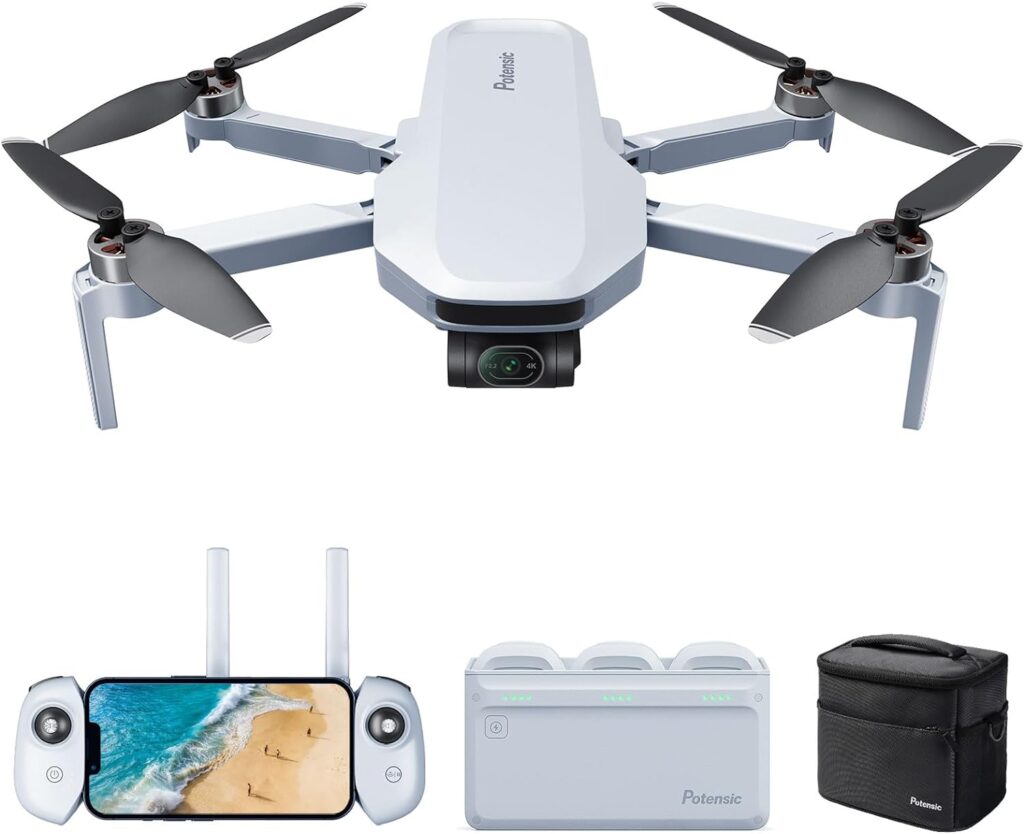
In addition to accessing difficult areas, drones provide an aerial perspective that offers a comprehensive view of the entire roof structure. By capturing high-resolution images and videos from different angles, inspectors can identify potential issues such as cracks, leaks, or structural damage more effectively than with traditional methods alone. The bird’s-eye view provided by drones allows for a detailed analysis that would be otherwise impossible or highly costly using conventional techniques.
Furthermore, drone technology has advanced rapidly in recent years with features like thermal imaging cameras and augmented reality overlays becoming increasingly common. These advancements enhance the capabilities of drone-assisted inspections even further by allowing inspectors to detect temperature variations on roofs indicating energy loss or insulation problems accurately. They can also overlay digital models onto real-time footage from drones providing instant virtual simulations highlighting any changes needed before they occur physically on-site.
Another crucial aspect where drones shine is data collection during inspections. Traditional methods rely heavily on manual note-taking which increases the chances of errors or missed information due to human factors like fatigue or distractions. On the contrary, using drones enables automated data collection processes through onboard sensors and cameras controlled remotely by skilled operators who are trained specifically for this task ensuring accurate data collection every time.
Moreover, the collected data can be stored digitally and analyzed with specialized software. This allows for easier tracking of the roof’s condition over time, as well as more efficient collaboration between inspectors, engineers, and other stakeholders involved in the inspection process. With digital records at their fingertips, professionals can easily compare current inspections to previous ones and identify patterns or recurring issues that may require immediate attention.
While drones have already proven their effectiveness in roof inspections, there are still ongoing research efforts to further improve their capabilities. Some researchers are exploring the use of artificial intelligence algorithms to automatically analyze drone-captured images and videos for specific roof conditions or defects. These developments could potentially lead to faster and even more accurate assessments of roofs while reducing reliance on human interpretation.
In conclusion, drones offer numerous benefits in the field of roof inspections. Their ability to access hard-to-reach areas without risking human lives, provide an aerial perspective for detailed analysis, collect accurate data efficiently, and aid in future advancements through AI integration make them a powerful tool for ensuring safe and effective roofing assessments. As technology continues to advance rapidly in this area, it is clear that drones will play an increasingly significant role in revolutionizing the way we inspect roofs now and into the future.
Environmental Impact: How Drones Contribute to Sustainable Roofing Practices
The use of drones in roof inspections has revolutionized the roofing industry. Not only do these unmanned aerial vehicles provide a safer alternative to traditional inspection methods, but they also offer environmental benefits that contribute to sustainable roofing practices.
One of the primary ways in which drones help reduce the environmental impact of roof inspections is by minimizing the need for physical access. Traditional inspection methods often require workers to climb ladders or erect scaffolding, which can damage surrounding vegetation and disturb wildlife habitats. In contrast, drones can easily fly above buildings and capture high-resolution images and videos without causing any harm to the environment.
Furthermore, using drones eliminates the need for heavy machinery such as cranes or cherry pickers, reducing noise pollution and air emissions associated with their operation. These machines typically run on fossil fuels, releasing harmful greenhouse gases into the atmosphere. By relying solely on battery-powered drones for inspections, contractors can significantly reduce their carbon footprint and contribute towards sustainable roofing practices.
In addition to minimizing physical access requirements and avoiding heavy machinery usage, drones also enable more efficient roof inspections. Equipped with advanced sensors and cameras, these devices are capable of capturing accurate data from multiple angles within a short amount of time. This efficiency not only saves time and resources but also reduces overall disruption to both building occupants and nearby communities.
By swiftly collecting precise data about a roof’s condition through drone surveys, contractors can promptly identify potential issues such as leaks or structural damages before they escalate further. This early detection allows for timely repairs or maintenance interventions that prevent additional damage while extending a roof’s lifespan – an essential aspect of sustainable roofing practices.
Drones’ contribution towards sustainable roofing extends beyond just their ability to inspect roofs quickly and accurately; they also facilitate better energy management strategies in buildings. With thermal imaging capabilities integrated into some drone models, inspectors can detect heat leaks or areas with poor insulation directly from aerial perspectives.
Identifying these energy inefficiencies allows building owners or facility managers to address them promptly, leading to reduced energy consumption and lower carbon emissions. By improving the overall energy performance of buildings through drone-enabled inspections, sustainable roofing practices can be enhanced while supporting a greener built environment.
Moreover, by leveraging drones in roof inspections, contractors are likely to decrease the likelihood of unnecessary material wastage. With accurate measurements and data obtained from aerial surveys, they can determine precisely what materials are required for repairs or replacements before initiating any work.
This precise planning not only reduces waste but also optimizes material usage, resulting in cost savings for both contractors and clients. Additionally, minimizing material waste contributes positively to sustainability goals by reducing the demand for raw resources and diverting fewer materials to landfills – a significant environmental concern.
In conclusion, drones offer an array of benefits that contribute to sustainable roofing practices. From minimizing physical access requirements and reducing heavy machinery usage to providing efficient inspections and enabling better energy management strategies, these unmanned aerial vehicles revolutionize how roofs are inspected while ensuring minimal environmental impact. Incorporating drones into roof inspection processes can help the construction industry move towards more sustainable practices in line with global efforts to combat climate change and protect our planet’s fragile ecosystems.
Top Regulatory Considerations for Utilizing Drones in Commercial Roofing Inspections
The use of drones in various industries has gained significant traction over the past decade. One area where this technology is proving to be particularly effective is in roof inspections. By utilizing drones, professionals can gain aerial perspectives that were previously impossible to obtain without costly equipment and manpower. However, before implementing drone usage in commercial roofing inspections, there are several regulatory considerations that must be taken into account.
First and foremost, it is crucial to understand the legal framework surrounding drone operations. In many countries, including the United States, drones fall under the jurisdiction of aviation authorities such as the Federal Aviation Administration (FAA). This means that individuals or companies looking to incorporate drones into their business operations must comply with specific regulations set forth by these agencies.
One key consideration is obtaining proper certification for commercial drone operation. This typically involves passing a written exam covering topics such as airspace rules and regulations, weather conditions affecting flight safety, emergency procedures, and more. Additionally, operators may need to register their drones with relevant authorities and display registration numbers on their aircraft.
Another important regulatory aspect pertains to pilot qualifications. Depending on the country or region in which they operate, commercial drone pilots may be required to hold a remote pilot certificate or an equivalent qualification issued by an authorized body. These certifications validate that operators possess the necessary knowledge and skills to safely navigate drones in various environments.
In addition to certifications for operators themselves, certain requirements apply specifically to the aircraft being used for commercial purposes. For example, some jurisdictions mandate that commercial drones carry appropriate liability insurance coverage to protect against potential damages resulting from accidents during flights.
Furthermore, privacy concerns have emerged as a critical regulatory consideration when deploying drones for roof inspections. Drones equipped with high-definition cameras can capture detailed images of buildings and surroundings from above – potentially infringing upon individuals’ rights if not managed responsibly. To address this issue proactively, it is essential for businesses using drones in roofing inspections to adhere strictly to privacy laws governing the collection and use of aerial data.
While these regulations provide a necessary framework for safe and responsible drone operations, they can also pose challenges for businesses seeking to implement this technology. Compliance with regulations may involve significant time and financial investments in training, certification, insurance coverage, and privacy protection measures. However, these considerations should not discourage companies from exploring the benefits that drones offer in terms of efficiency and cost-effectiveness.
In conclusion, integrating drones into commercial roofing inspections requires careful attention to regulatory considerations. From obtaining proper certifications for operators to ensuring compliance with aviation authorities’ guidelines on aircraft registration and liability insurance, businesses must navigate various legal requirements before embarking on drone-assisted roof inspections. Furthermore, privacy concerns stemming from the capture of high-resolution imagery call for responsible data management practices. By addressing these regulatory considerations diligently while embracing the power of aerial perspectives provided by drones, professionals can enhance their ability to conduct thorough and efficient roof inspections – ultimately benefiting both clients and the industry as a whole.
Drone Insurance and Liability Coverage: Ensuring Protection During Aerial Surveys
The use of drones in roof inspections has become increasingly popular in recent years due to their ability to provide valuable aerial perspectives. These unmanned aerial vehicles (UAVs) offer a range of benefits, including improved safety, cost-effectiveness, and efficiency. However, like any technology, drones come with potential risks and liabilities that must be addressed. This is where drone insurance and liability coverage play a crucial role.
Drone insurance provides protection against any potential damages or losses that may occur during the operation of the UAV. It covers various aspects such as accidental damage to property or third-party injury caused by the drone. Additionally, it can also protect against theft or loss of the equipment itself.
One major benefit of having drone insurance is the peace of mind it provides for both operators and clients. Roof inspections often involve maneuvering around obstacles and structures at varying heights, which increases the likelihood of accidents occurring. With comprehensive insurance coverage in place, operators can focus on carrying out their tasks without constantly worrying about potential financial liabilities arising from unforeseen circumstances.
Clients also benefit from this coverage as they are reassured that any damages resulting from drone operations will be covered by insurance policies held by the operator. This helps establish trust between service providers and customers while demonstrating professionalism and responsibility.
Liability coverage plays an equally important role in protecting all parties involved in roof inspections using drones. In addition to physical damages or injuries caused by accidents involving drones, liability coverage extends to legal expenses incurred during litigation processes related to these incidents.
With strict regulations surrounding commercial drone usage imposed by aviation authorities worldwide, compliance with these rules becomes paramount for operators seeking adequate insurance coverage. Insurance companies require evidence of proper training certifications issued by authorized institutions before granting policy approvals.
Operators should also carefully consider the level of liability coverage required based on their specific needs and business practices when selecting an appropriate policy package offered by insurers specializing in commercial drone operations.
Apart from complying with legal requirements set forth by aviation authorities, operators should also consider obtaining liability coverage that protects against privacy breaches. As drones are capable of capturing images and videos from various angles, it is essential to respect the privacy rights of individuals residing in or around properties being inspected.
In the event of a privacy breach, such as inadvertently capturing images through windows or private property without consent, liability coverage can help mitigate any potential legal repercussions. This protection ensures that operators conduct their drone operations responsibly and ethically.
When choosing insurance providers for drone-related services, it is advisable to opt for companies experienced in handling claims specific to UAVs. These insurers possess specialized knowledge and expertise in assessing risks associated with aerial surveys and have tailored their policies accordingly.
To conclude, drone insurance and liability coverage are critical aspects when considering the use of drones in roof inspections. They provide protection against damages or losses that may occur during operations while ensuring compliance with regulations imposed by aviation authorities. By investing in comprehensive insurance packages offered by reputable providers specializing in commercial drone operations, both operators and clients can enjoy peace of mind knowing they are adequately protected against potential risks and liabilities arising from aerial surveys.In conclusion, the use of drones in roof inspections provides aerial perspectives that are highly advantageous. Drones allow for faster and safer data collection, detailed imagery, and improved accuracy. They can access difficult-to-reach areas and provide a comprehensive view of roofs, helping to identify potential issues or damage. The power of drones in roof inspections offers significant benefits to both inspectors and property owners alike.
